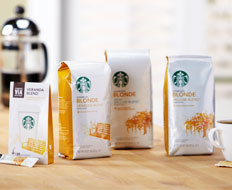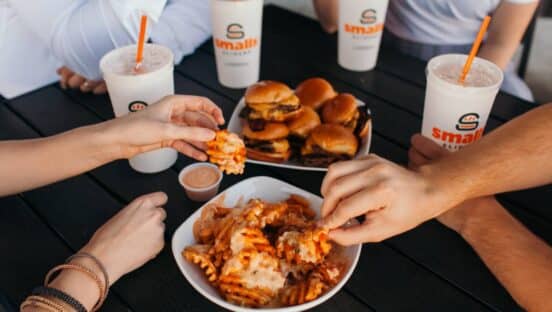After 40 years of staking its reputation on dark and medium coffee roasts, Starbucks began offering a light roast on January 10.
The Seattle-based coffee giant launched its new Blonde roast across the country in what some believe is a response to the growth of coffee competitors like McDonald’s and Dunkin’ Donuts.
In an e-mail to QSR, Starbucks spokeswoman Alisa Martinez said the company launched the lighter roast as a response to market demand. The company’s research showed that while plenty of customers liked the taste of Starbucks’ darker blends, 54 million American coffee drinkers would rather drink something milder.
“We realized there was a huge segment of the market we were missing,” Martinez said. “Nearly 40 percent of U.S. coffee drinkers prefer a lighter roast.”
Martinez said the Blonde, which is available in the Veranda Blend (notes of cocoa and lightly toasted nuts), the Willow Blend (bright, crisp flavor), and Decaf Willow Blend, also gives existing customers a new reason to go to Starbucks.
John Gordon, principal and founder of the Pacific Management Consulting Group, says the Blonde could draw customers from other chains.
“I think it is a shot at McDonald’s,” Gordon says. “It’s somewhat of a shot at Dunkin’. I think this is a deliberate strategy to reach out to that entire flavor profile segment.”
Dunkin’ Donuts, in particular, has succeeded largely on the back of its popular light roast, the Original Blend.
“Coffee is the core of our business,” says Grant Benson, vice president of franchise and market planning for Dunkin’ Brands. “It is the No. 1 product, it’s what we exist [for], it’s what our priority is.” Benson estimates that 60 percent of the company’s sales come from the beverage menu.
Dunkin’s success helped it expand through the recession, and recently the company announced its intention to double its unit count from more than 7,000 locations to some 14,000 locations in the next 20 years. The chain is planning to expand aggressively into what Benson calls “white space,” or new territories where the company doesn’t have a presence—including Starbucks’ stronghold, the West Coast.
But Gordon says Starbucks probably isn’t fazed by Dunkin’s westward growth.
“Based on the past, my guess would be that Starbucks won’t even think about it,” Gordon says. “Everybody looks at their competitors of course, but I think Starbucks thinks that they’re on a different level.”
Where Starbucks might be more concerned about coffee competitors is in the retail space. The Dunkin’ Donuts Original Blend is, according to Dunkin’, the No. 1 coffee SKU in grocery stores across the country, and Benson says it’s been a great way to get the Dunkin’ Donuts brand in front of people, especially in regions where it doesn’t yet have stores.
Martinez says grocery sales have been a major missed opportunity for Starbucks and that the Blonde roast will help the company build that category.
“Down the grocery aisle [is] where a majority of sales are in the light and medium roast categories,” Martinez wrote. “This segment of the market represents a $1 billion opportunity for the company in the U.S. alone.”
To help Starbucks’ push to build its retail business, the company is debuting new, minimalist coffee packages that are organized by roast, making it easier for customers to select which coffee they want to purchase. The light roast packages have a yellow color scheme, the medium are brown, and the dark are purple. The new packaging will be used in Starbucks stores as well.
“These categories will make it easier for customers to find their favorite coffee by taste and intensity,” Martinez said. “This is incredibly important in grocery, given 25 percent of shoppers leave the coffee aisle without making a decision, because they can’t find what they are looking for.”
With McDonald’s, Krispy Kreme, and smaller chains like Saxbys and Caribou Coffee stepping up their growth efforts, the coffee space is heating up. But brands may be able to grow without bumping into each other, Gordon says. He compares the situation to 2008 and 2009, when Howard Schulz returned to revive a struggling Starbucks, and McDonald’s ramped up its McCafé offerings.
Even though both major national chains were focusing intensely on coffee, Gordon says, neither was significantly affected by its rival.
“Both of them said, ‘Well, the other guy didn’t touch me at all,’” Gordon says.










